Today we have a guest post written by the team at Coat of Arms and Family Crest Search Read on to find out the history of heraldry, and how to find out if anyone in your family has ever had a right to bear arms:
If you are researching your tree for a coat of arms or family crest, then you really need to read the rest of this. It is a common belief that every family has a family crest or coat of arms in their history. This is not true in the least. There really is only one way to know for sure whether your family has a coat of arms or family crest and that is through research. It is actually rare for a family to have a family crest, even rarer for the family to have a right to use them, and rare for there to be a person in your family’s history that would hold a coat of arms. Before we get into particulars, the background on coats of arms and family crests needs to be examined.
To truly understand the difference between a coat of arms and a family crest we will start with the definition of each. As an example, we will show the coat of arms and a crest of the current royal family. A coat of arms is defined as
“Heraldic insignia or devices. Coat armour = ‘coat of arms,’ originally a vest of silk or other rich material embroidered in colours, worn over the armour of a knight, to distinguish him in the lists or on the field of battle.”
A family crest is defined as
“Heraldry. A figure or device (originally borne by a knight on his helmet) placed on a wreath, coronet, or chapeau, and borne above the shield and helmet in a coat of arms; also used separately, as a cognizance, upon articles of personal property, as a seal, plate, note-paper, etc.”
The crest is one component of a coat-of-arms, which can be used as a simplified symbol when the full coat of arms is too detailed e.g. on engraved cutlery.
The crest of Prince Charles of Wales outside of Scotland looks like this:
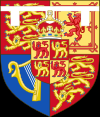
The crest of Prince William Duke of Cambridge
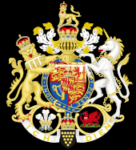
The Coat of Arms of Prince William Duke of Cambridge:
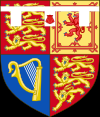
The Crest of Prince Harry Duke of Sussex:
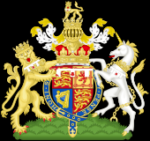
The Coat of Arms of Prince Harry Duke of Sussex:
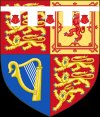
As you can see these are all from the same family; a father and two sons. All of the crests and coats of arms are very similar with minor differences. You can tell they are the same family unit but can also tell that each one is designed for that particular person. Therefore, when you are looking for a company to assist you in your quest you need to make sure they aren’t representing just one for a single-family name.
Coats of arms were designed for shields carried by a medieval knight, and the crest was usually worn on the helmet, sleeve and armour. Each design was unique to a specific individual. Usually the knight only had the right to the coat of arms during his lifetime, but sometimes the knight was allowed to pass the design down to his male heir. At that time, it became the family coat of arms. By the 12th century many knights, clans and septs used a coat of arms when they went into battle. In the 13th and 14th centuries families had started using a coat of arms that was a previous ancestor’s as a family logo, and they sewed these onto their flags that flew above their castles and manors. Only the ancestors with distinguished titles such as knights, baronets, barons, viscounts, marquees, dukes, and princes were distinguished enough to have coats of arms granted to them by the kings of that time. Once these families started using a coat of arms they were passed down through generations, even to the present day.
British rules state that only the firstborn can receive his father’s crest upon death. Then to the firstborn grandson (or granddaughter (daughter) if the man had no son). In several cultures, it is tradition when a couple marries that their crests are combined into a new crest with features from both.
In certain cultures, a man could give his crest to anyone of his choosing. In Ireland you can petition the Heraldry Agency for the right to bear arms. In the United States you may create your own crest and register it with a notary or clerk of any court before someone else creates the exact design.
To figure out if you have a distinguished person that carried a coat of arms in your family tree, the only true way is to trace your family tree and continue that trace for every generation to find out if there was a coat of arms issued or held by a particular ancestor. You may have more than one ancestor that had a coat of arms, or there could be multiple coats of arms for any particular family. Throughout the research it could be found that there are no coats of arms that are linked to your particular lineage.
At https://coadb.com/ they research and post all of the coats of arms that have been granted for a particular surname and individual that it was granted to. They also have research staff that can assist in tracing your lineage to see if you are one of the lucky ones that are descended from a bearer of arms, as well as a design staff to create your very own coat of arms if that is what you desire.


Pingback: COAT OF ARMS – Meanings and Symbols | Tracing Ancestors In The UK